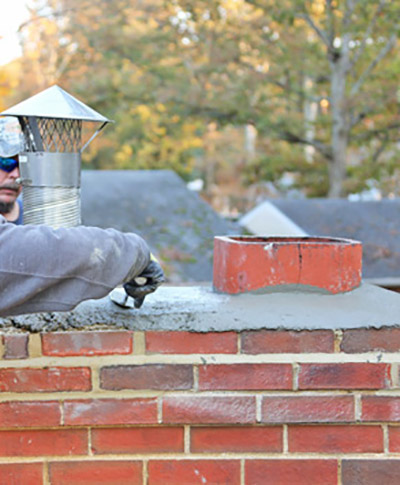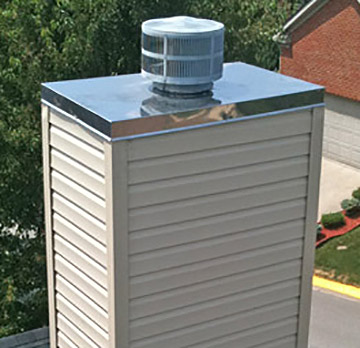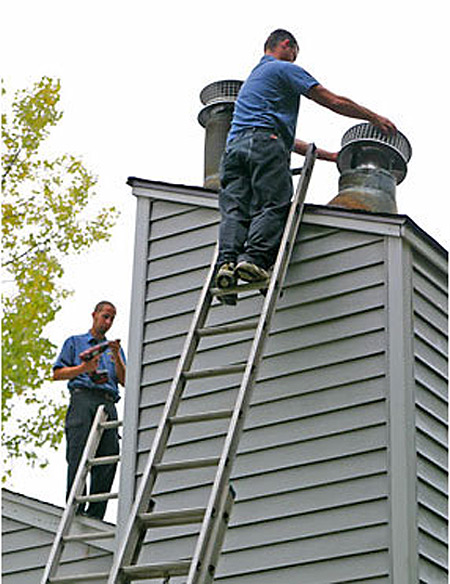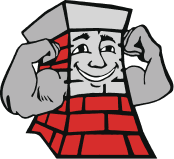The Difference between a Chimney Crown, Chase Cover, and Chimney Cap
 Your chimney is a workhorse constantly exhaling smoke, fumes and other contaminants while you’re enjoying the warmth of your fireplace or wood stove. That’s why it’s important for homeowners to not only understand the difference between a chimney crown, chase cover and chimney cap, but how they help protect their home and chimney.
Your chimney is a workhorse constantly exhaling smoke, fumes and other contaminants while you’re enjoying the warmth of your fireplace or wood stove. That’s why it’s important for homeowners to not only understand the difference between a chimney crown, chase cover and chimney cap, but how they help protect their home and chimney.
Together, these three critical components are the most visible, forming a protective barrier to keep water, small animals and debris out of the chimney and fireplace. And when any of these components are missing or fail, the risk of chimney problems rises.
Chimney Crown
The chimney crown is the top level of the chimney. It is usually completed from leftover mortar or cement during chimney construction and is the basic first line of defense for protecting your chimney from its most dangerous threat: water. When properly installed and maintained, the sloped surface directs much of the water away from the chimney.
Due to its prime location, the chimney crown takes a lot of abuse from outside influences like the weather and environmental conditions. These influences can cause cracks to develop on the crown allowing water to leak behind the bricks inside the chimney. If damages to the crown are not discovered and repaired in a timely manner, the brick masonry will begin to soften, decay and eventually break off the chimney. While the crown seals most of the chimney, the flue is still exposed. So having a crown alone is not enough to keep all water and debris out of the chimney.
Chimney Chase Cover
 The structural housing between the roof line and the chimney crown is the chase. The chase plays an important firefighting role in directing smoke, and flying burning embers away from your roof. Depending on your home construction, the chase may be built with brick, wood, vinyl or metal siding.
The structural housing between the roof line and the chimney crown is the chase. The chase plays an important firefighting role in directing smoke, and flying burning embers away from your roof. Depending on your home construction, the chase may be built with brick, wood, vinyl or metal siding.
The chase cover is a steel or aluminum square or rectangle-shaped cap that fits snugly on top of the chase to help protect it from water damage. Since aluminum chase covers are more prone to rusting than stainless steel, especially in coastal areas with high levels of salinity in the air, they need to be inspected regularly.
Chimney Cap
The chimney cap acts like a rain hat to help prevent water, birds, small animal and debris from getting inside the flue. It’s mounted above the crown and is often manufactured using stainless steel to wrap the flue inside a cage-like mesh allowing smoke to vent, but prevent outside material from getting into the chimney.
While most homeowners will consider the chimney cap to be an indispensable safety device, it’s an optional accessory and may not have been installed when the chimney was originally constructed.
 The chimney cap is of particular importance. Without it, the flue and fireplace are exposed to the external elements. This can cause the masonry to decay and also rust important metal components like the damper and smoke shelf leading to more expensive repairs. Also, small birds, squirrels, raccoons and other little critters are attracted to exposed chimneys for cover against predators. These creatures and other small debris can clog the flue. This prevents the escape of dangerous fumes from a burning fireplace exposing occupants in your home to dangerously high levels of smoke and carbon monoxide.
The chimney cap is of particular importance. Without it, the flue and fireplace are exposed to the external elements. This can cause the masonry to decay and also rust important metal components like the damper and smoke shelf leading to more expensive repairs. Also, small birds, squirrels, raccoons and other little critters are attracted to exposed chimneys for cover against predators. These creatures and other small debris can clog the flue. This prevents the escape of dangerous fumes from a burning fireplace exposing occupants in your home to dangerously high levels of smoke and carbon monoxide.
Also, uncapped chimneys are at a higher risk of fire. With the right weather conditions, burning embers from the fireplace can be sucked through the chimney and land on your roof and start a fire. The force of a downdraft from an exposed flue can blast open fireplace doors pushing smoke, soot and ash into the room.
Homeowners are urged to have their chimney cap, chimney crown and chase cover inspected annually and repair any missing or damaged components as soon as possible by a certified chimney sweep.


